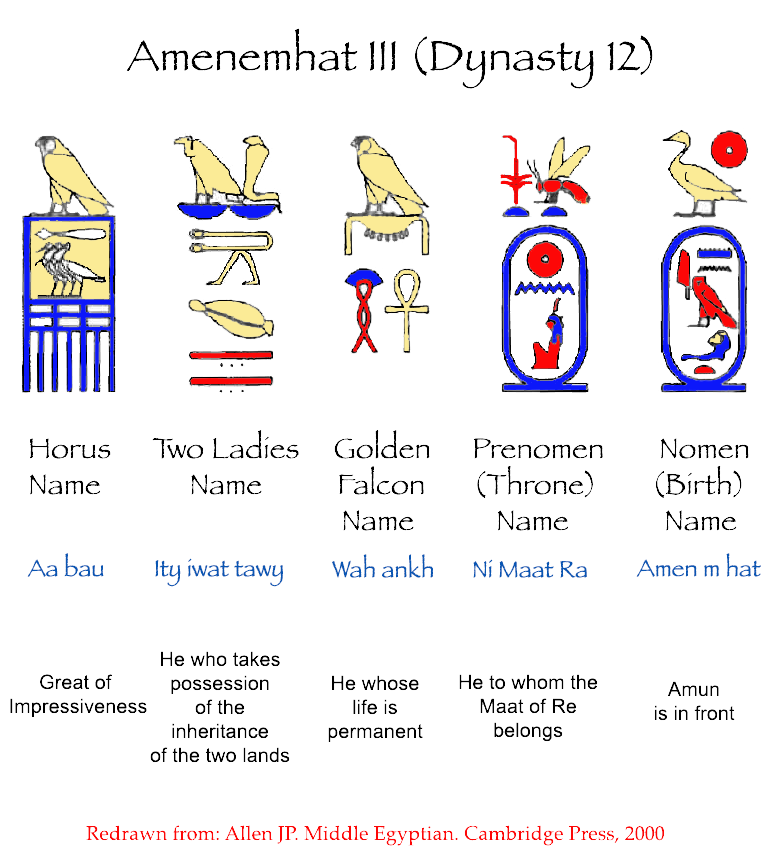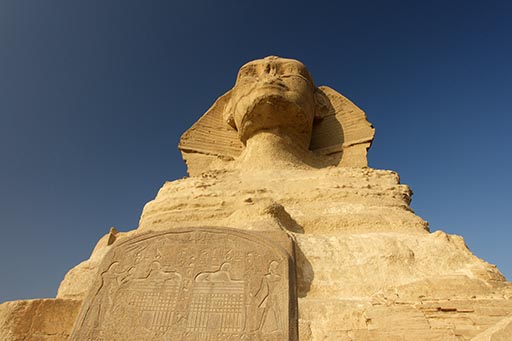The Pharaohs had as many as five names or titles during their reigns. These names served a variety of religous and political purposes. This is an example of the royal names or titulary of a Pharaoh from the Twelth Dynasty.
Starting on the left, the Horus name is enclosed in a symbolic palace with the god of kingship, Horus, the falcon sitting on it. The Horus name was probably the first royal name to be adopted.
Next, the Two Ladies, or Nebty name, the Vulture and the Cobra sit atop the hieroglyphs of the two-ladies name. The two animals represent Upper and Lower Egypt.
To the right is the Golden Horus name with Horus the Falcon (God of Kingship) sitting atop the glyph for gold, the eternal metal and the name below the gold.
Next, the Throne name is a cartouche with a sedge plant and a bee (again, representing Upper and Lower Egypt respectively) atop the name inside a cartouche. The sedge and the bee are pronouced niswt-bity which translated means "He of the sedge and the bee", which to ancient egyptians meant King of the two lands.
Finally, on the right is the Nomen or Birth Name inside another cartouche. Atop the cartouche is a duck and a sun disk. Those symbol represent the words for Son of Ra (pronounced Sa Ra).
A cartouche itself is a symbolic circle of rope signifying the whole world. Cartouches enclose the last two names of a Pharaoh, the Throne name (prenomen) and the Birth name (nomem).
Up to the fifth dynasty, the main name found in inscriptions was the Horus name. After that the most important names were the Prenomen and the Nomen. These are the names that are always found inside cartouches. Not all Pharaohs have survivng examples of all of their names.



